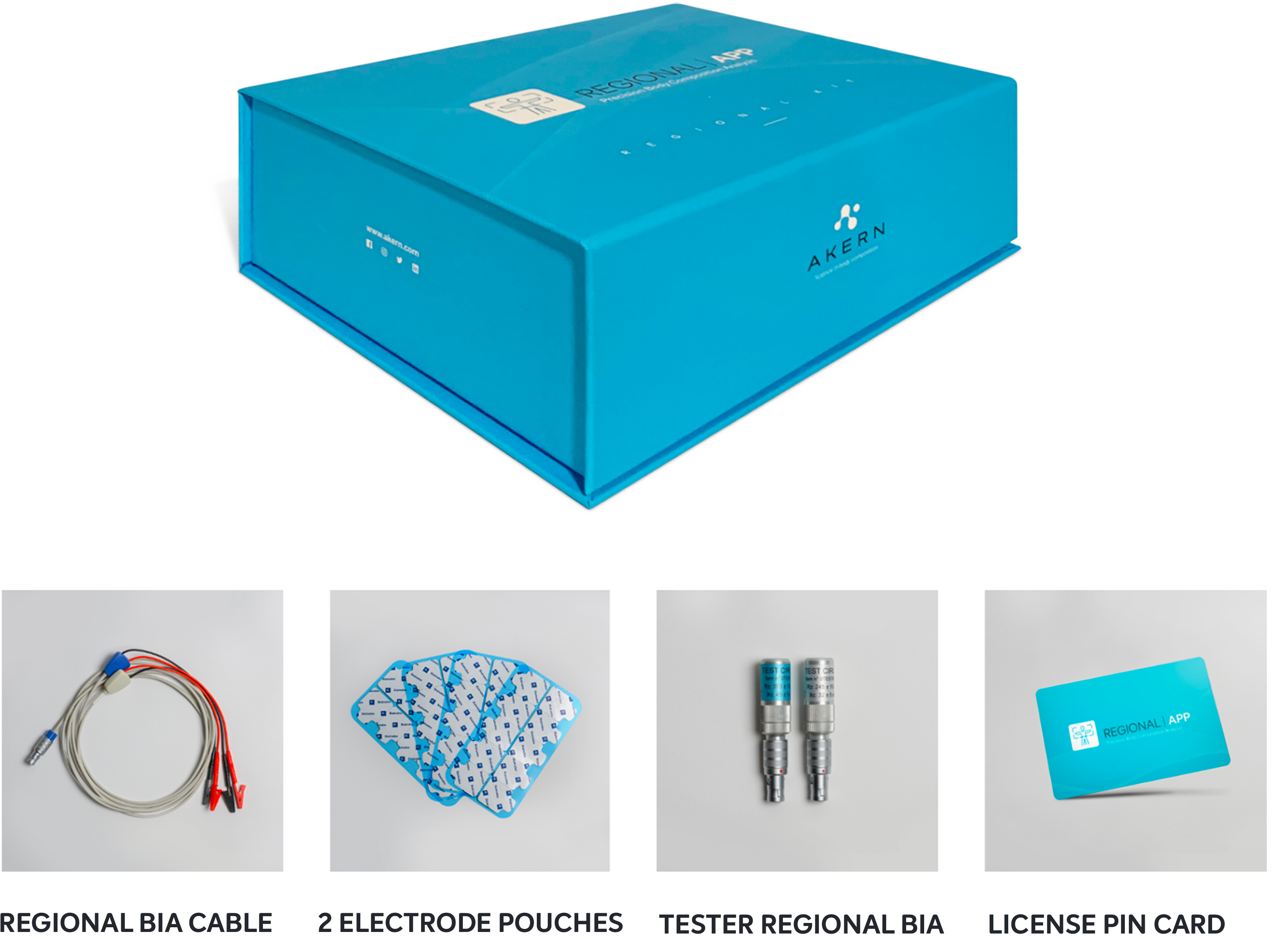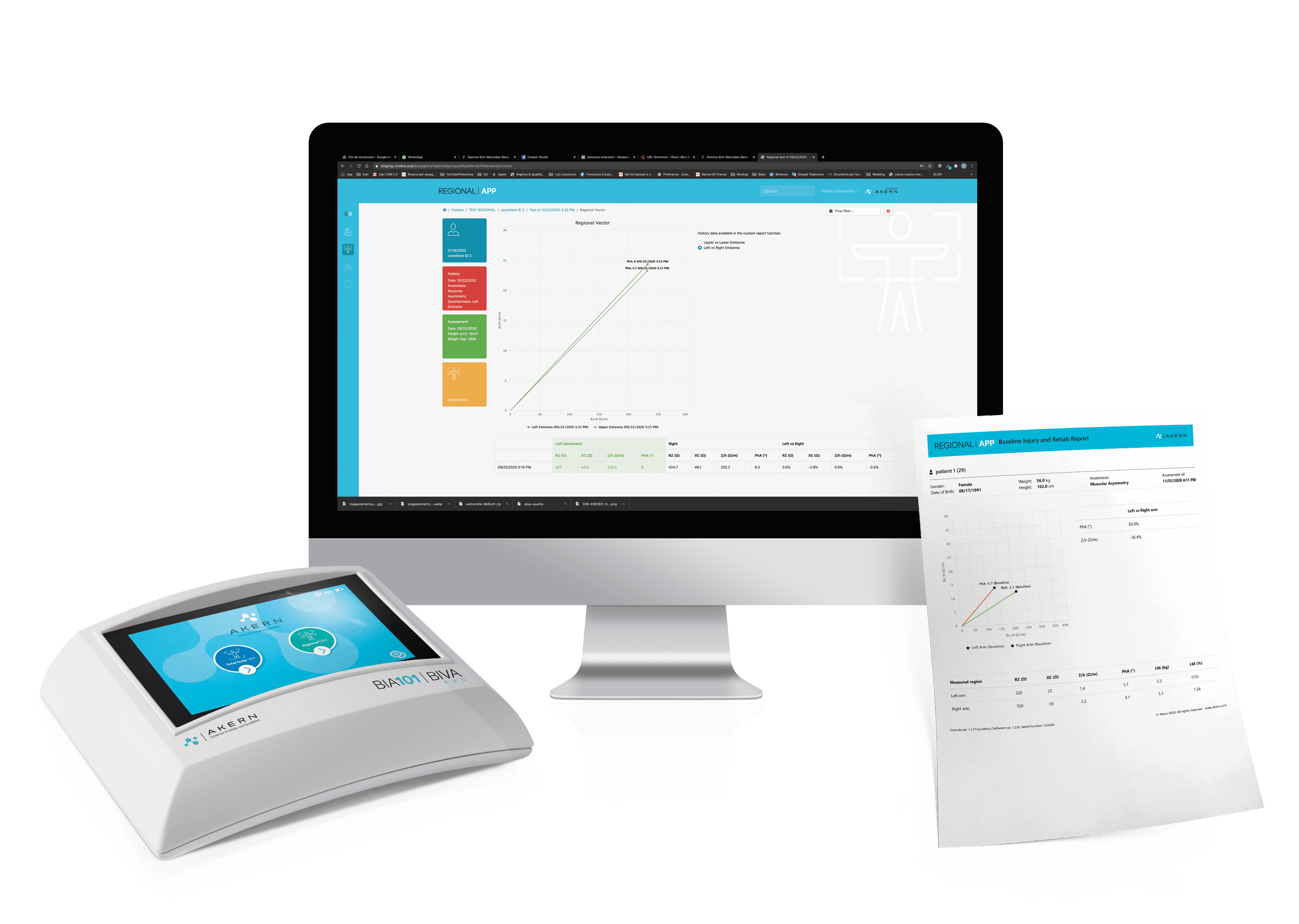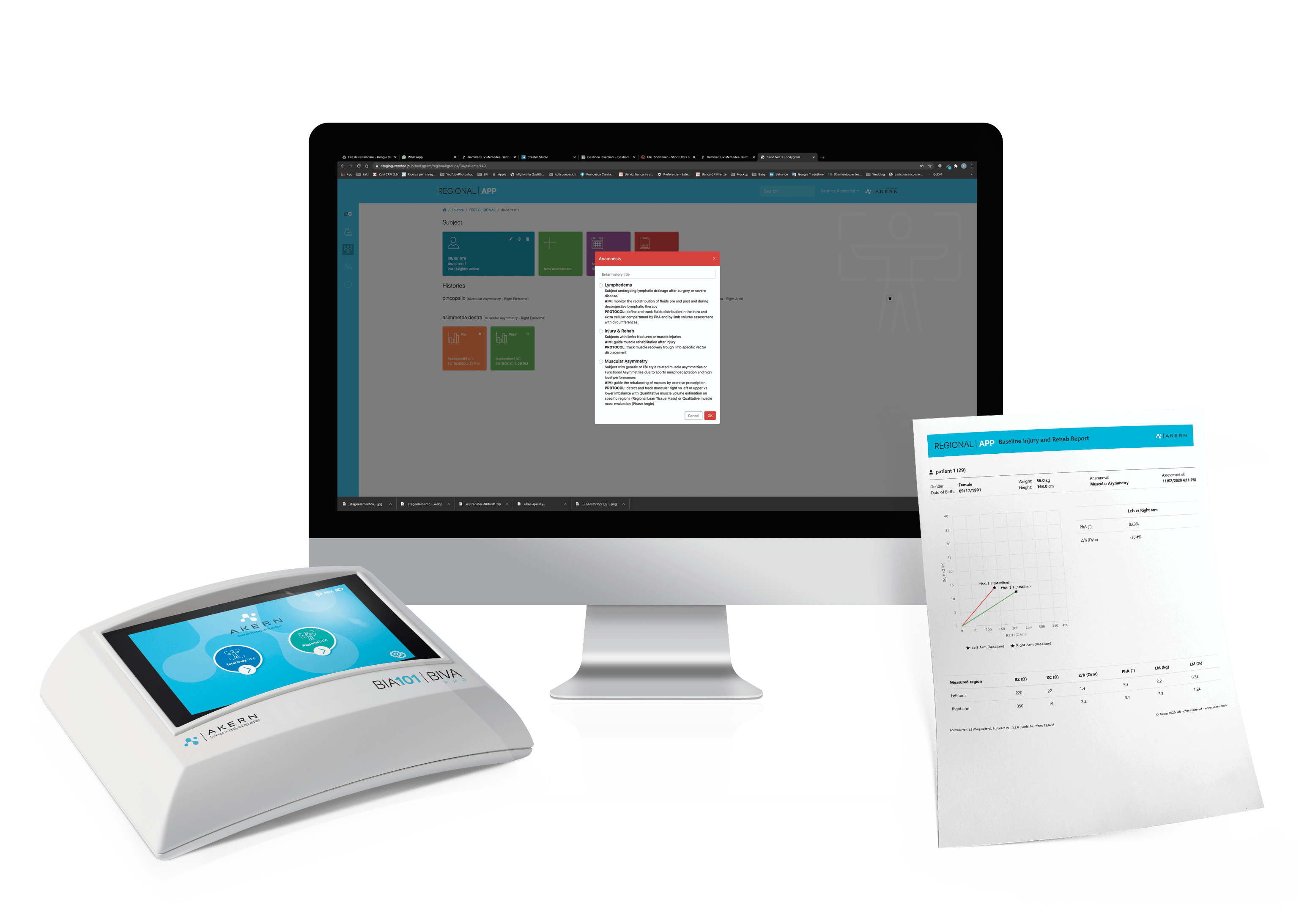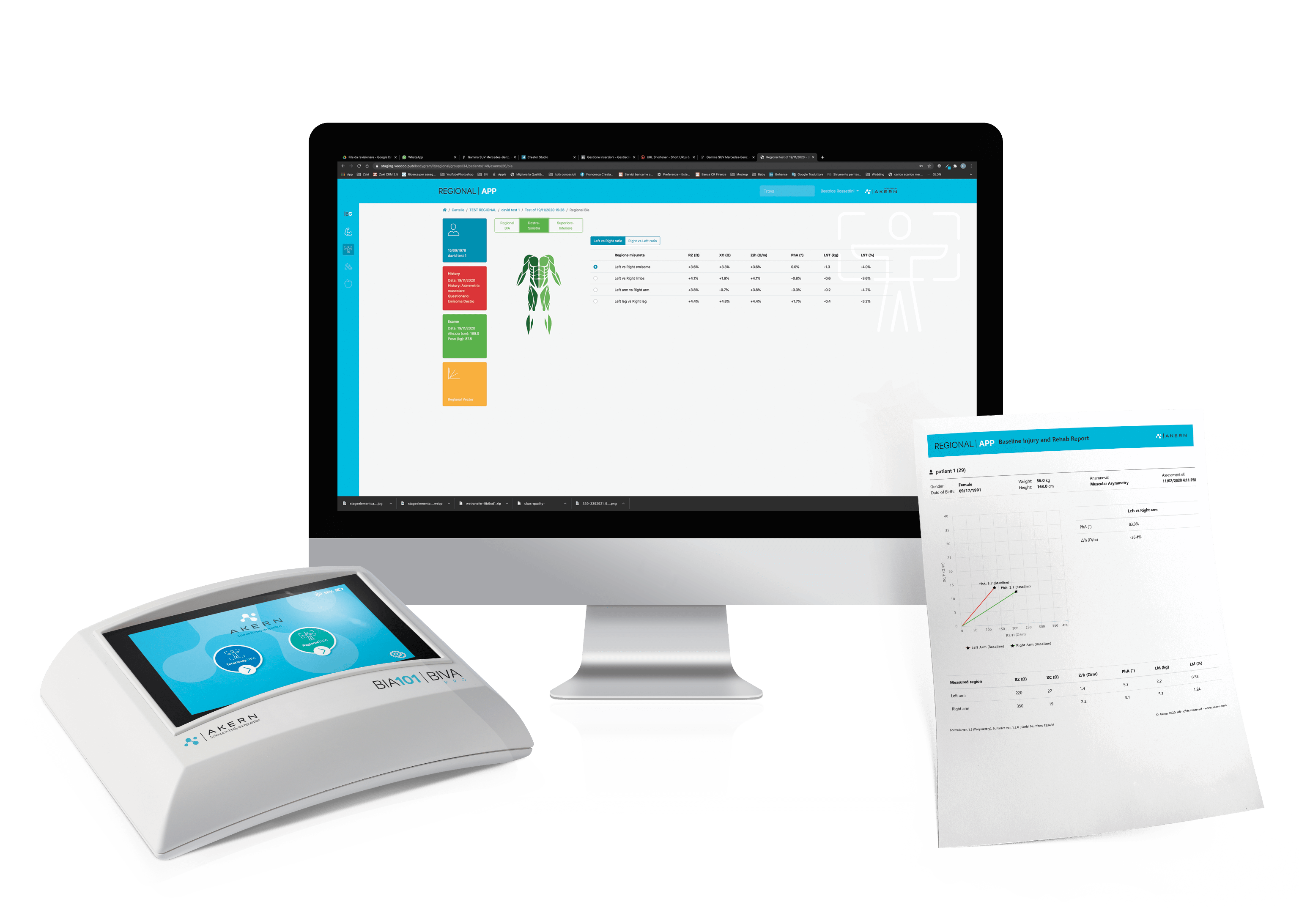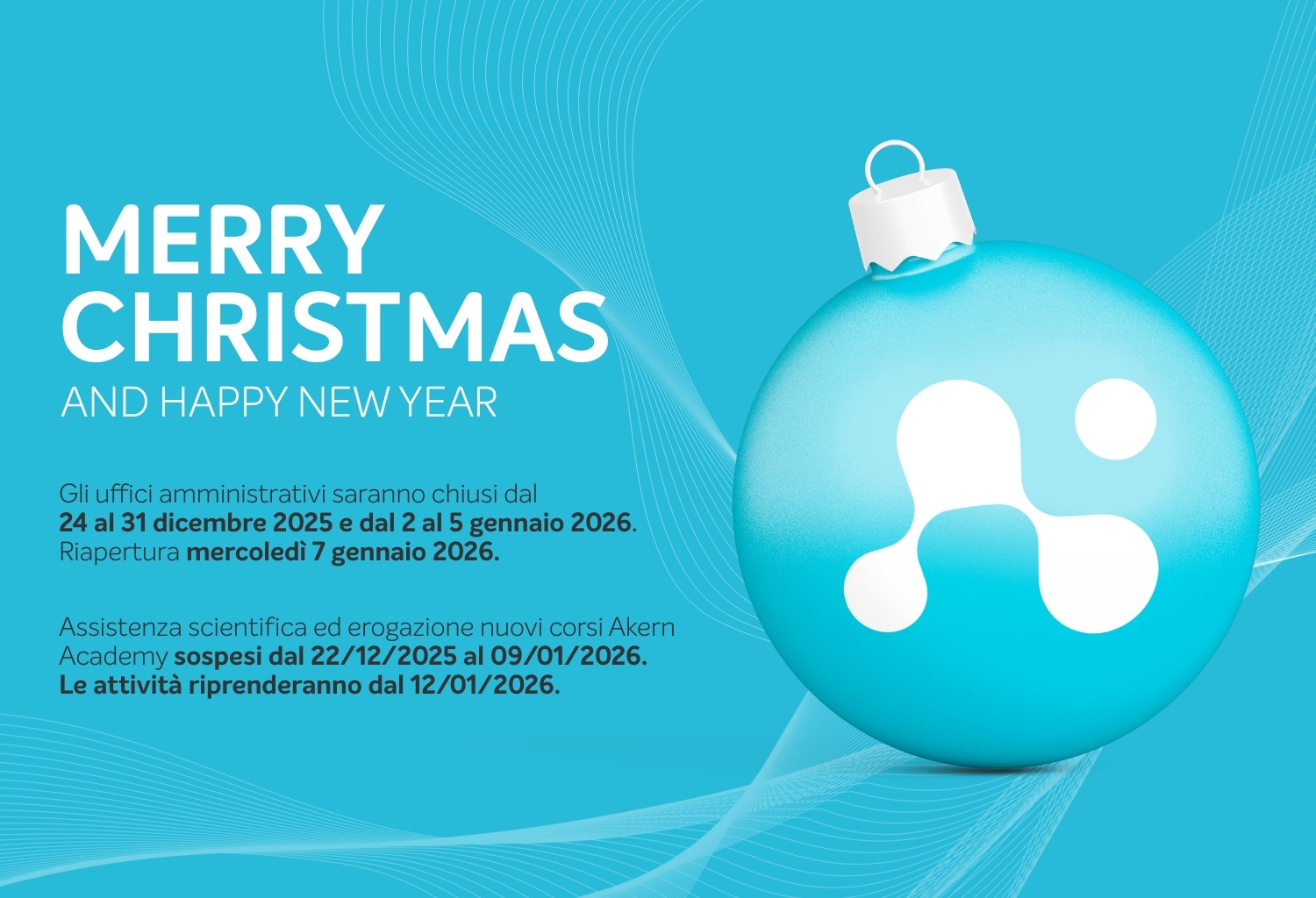REGIONAL APP
More sensitive and accurate measurements
REGIONAL APP is the dedicated application to analyze the bioimpedance data of 10 anatomical body regions based on the innovative REGIONAL BIA model.
Regional analysis (or Regional BIA) is the most advanced solution to analyze specific body segments as it considers the musculoskeletal system for each anatomical area.
Regional Bia
The evolution from a geometric model to an anatomical configuration.
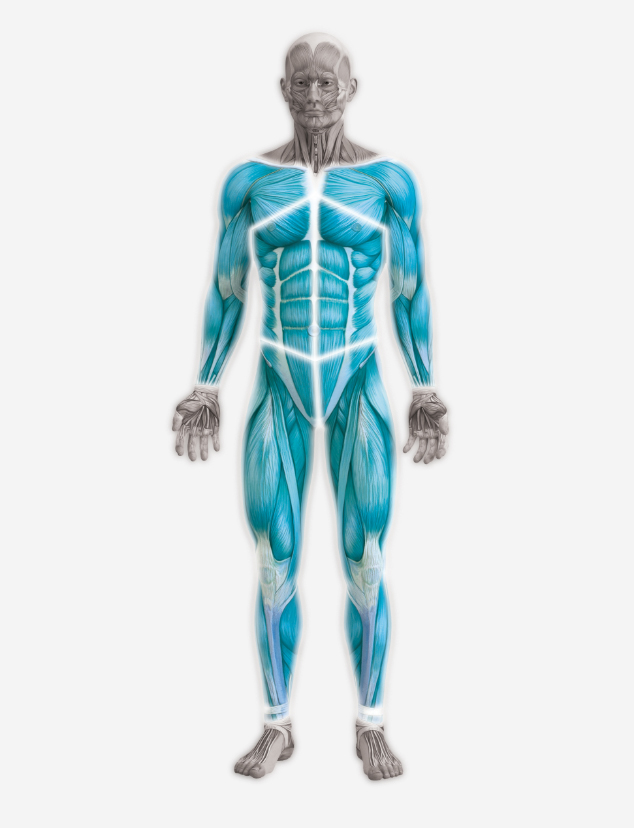
The traditional “Segmental model” (Segmental BIA) simplifies body segments into cylinders (geometric model).
It is known however, that this approximation does not reflect positively in the prediction of the LBM (Lean Body Mass) since, for example, it does not consider the junction areas between limbs and trunk, which contribute significantly to the bioimpedance of the individual limbs. As Muscles are conductive tissues, they extend way over the joints between limbs and the trunk, describing a model (anatomical configuration) that is different from the skeletal structure.
The new REGIONAL BIA model, developed by AKERN®, overcomes the geometric assumptions of current distribution, which is the reference for the segmental model.
The innovative REGIONAL BIA analysis technique, available with the BIA 101 BIVA® PRO sensor, focuses on the real musculoskeletal architecture of the anatomical districts analyzed, allowing for a most accurate LBM (Lean Body Mass) assessment of each individual body district.
More accurate assessments
Lean Soft Tissue Mass is the fat-free and bone-mineral-free compartment that includes muscle and other components such as skin, tendons and connective tissues and is the largest contributor to body mass. The new REGIONAL BIA model, validated vs DEXA, provides a precise Lean Soft Tissue (LST) estimate of 10 anatomical regions and detects minimal changes.
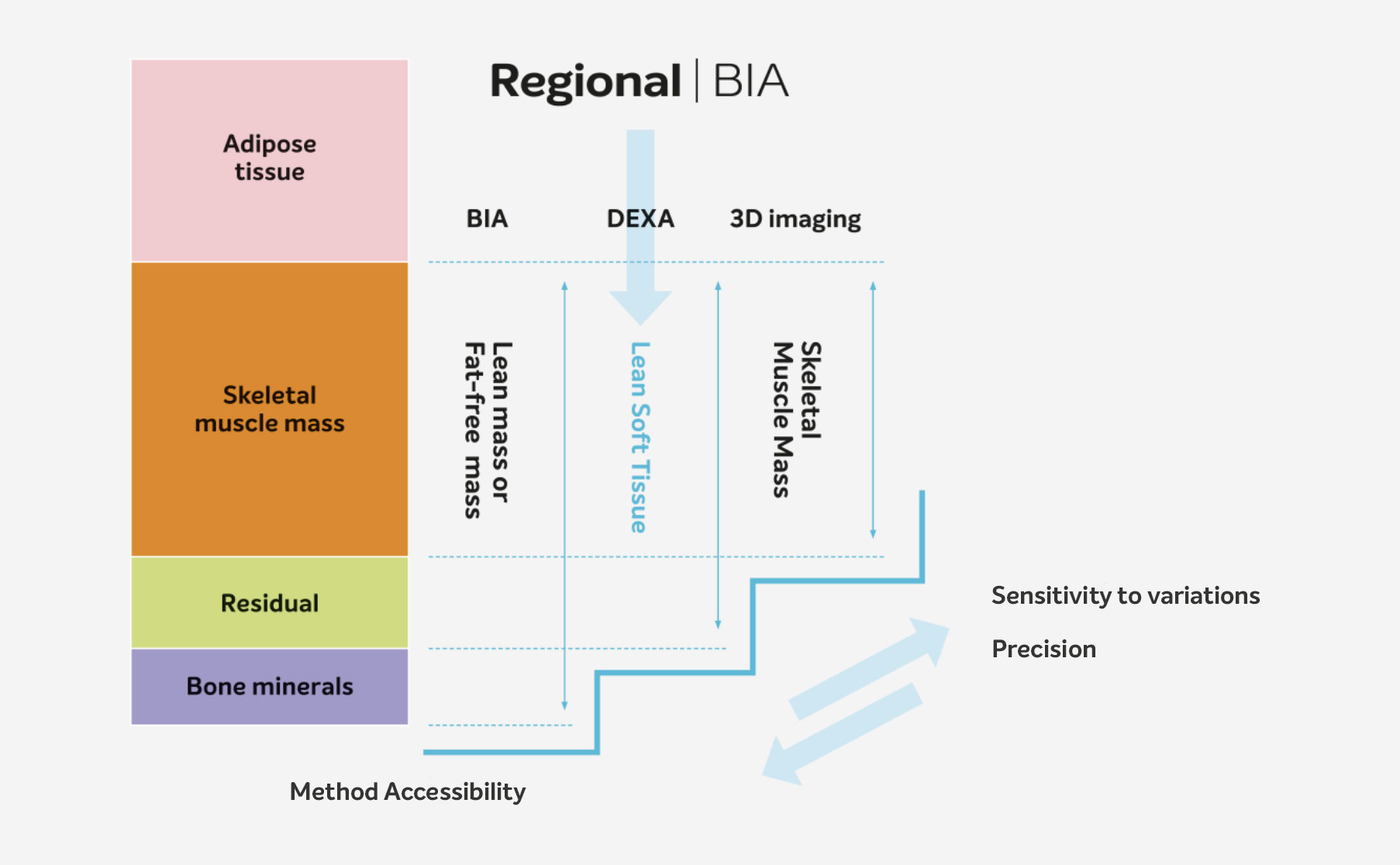
Application fields for REGIONAL BIA analysis
-

MUSCLE ASYMMETRIES
For individuals with genetic or lifestyle-related muscle asymmetries or functional asymmetries due to high-level sports morpho-adaptation. The goal is to Rebalance the masses through quantitative monitoring of muscle volume (LST) and qualitative assessment through the variation of the phase angle (PhA).
-

LYMPHEDEMA
For people undergoing lymphatic drainage after surgery or serious diseases. The goal is to define and trace the distribution of fluids in the intra and extra cellular compartments before and after lymphatic drainage therapy by monitoring the phase angle (PhA) values of the limb affected by lymphedema.
-

REHABILITATION
For individuals with limb fractures or muscle injuries. It allows to Assess muscle damage and monitor recovery by evaluating the vector displacement of the injured limb and the restoration of muscle mass (LST).
INCLUDED FEATURES
A precise and individualized approach for clinical rehab applications of REGIONAL BIA analysis.
-

HISTORY
The HISTORY REGIONAL APP function allows to record the specific events of the subject (intervention, limb injury…) grouping them in one of the three available anamneses (lymphedema, asymmetries, rehabilitation): in this way the correct protocol to achieve the target can be applied.
-

REGIONAL VECTOR
Through impedance vector comparison, it is possible to detect in an early phase, and with high sensitivity, volume and quality abnormalities on hemisomes and limbs.
-

REGIONAL BIA
This function shows the summary of the measured bioelectrical data and compares the LST values for each analyzed region.
REGIONAL KIT
Request your regional kit to extend the functions of your BIA 101 BIVA® PRO device and access the REGIONAL BIA TESTER analysis.
